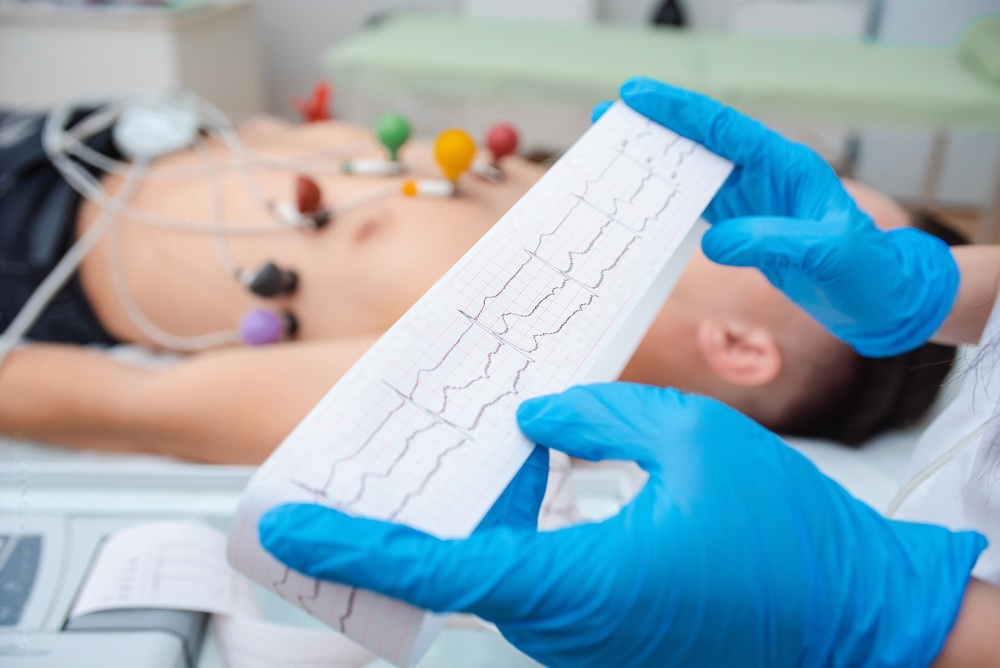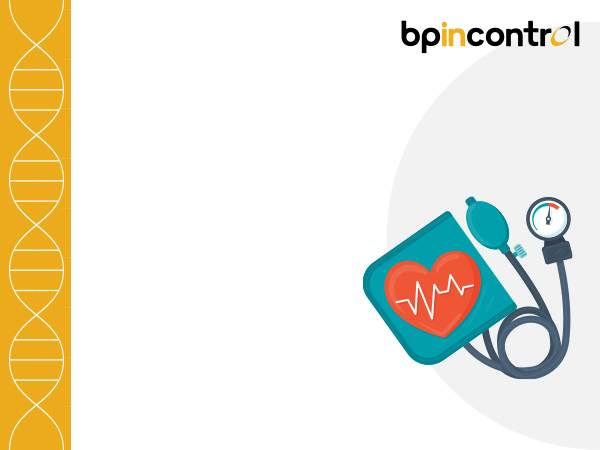Tachycardia (Fast Heart Rate): Types, Symptoms, Causes & Treatment

Table of Contents
Have you ever had an unexpectedly frenzied heartbeat that made you feel worried and out of breath? In that case, you might have had tachycardia. A heart rate that is extremely high compared to resting levels is known as tachycardia.
In this article, we will shed light on tachycardia — meaning, its causes, and discuss available treatments for this unusual disorder that disrupts the normal rhythm of our hearts.
What is Tachycardia (Fast Heart Rate)?
Tachycardia, also referred to as fast heart rate, is a cardiac disorder marked by an accelerated heartbeat. The human heart typically beats between 60 to 100 times per minute while at rest, striking a balance between the amount of blood it can pump and the amount of oxygen the body needs. Tachycardia, on the other hand, upsets this balance, causing the heart to beat faster than normal and fall above the top limit of its normal range.
Tachycardia can appear in a number of ways, each with its own specific traits and underlying reasons. It may result from issues with the heart’s electrical system or be brought on by outside factors like stress, worry, physical effort, or ingesting certain drugs or chemicals like caffeine. Recognizing the presence of tachycardia is crucial for early intervention and appropriate management.
Types of Tachycardias
Understanding the different types of tachycardia is crucial in accurately diagnosing and managing the condition. Let’s explore some of the common types:
- Supraventricular Tachycardia (SVT): This kind of tachycardia starts above the ventricles and involves the atria or the atrioventricular (AV) node. Heart rate spikes between 150 and 250 beats per minute are common during SVT episodes, which can be sudden, transient, or persistent. SVT frequently develops without underlying cardiac disease and may be triggered by stress, coffee, or certain medications.
- Ventricular Tachycardia (VT): VT results from abnormal electrical activity in the heart’s bottom chambers called ventricles, which are in charge of pumping blood to the body. It is characterized by a fast heart rate of more than 100 beats per minute. VT can be a dangerous disorder, especially when it lasts or occurs in those who already have heart disease. In severe situations, ventricular fibrillation—a rhythm disorder can occur, posing a life-threatening risk to the patient.
- Atrial Fibrillation (AF): Atrial Fibrillation represents a chaotic and irregular electrical activity in the atria, the heart’s upper chambers. This results in a rapid and irregular heart rate, often exceeding 100 beats per minute. AF is one of the most common types of arrhythmias and can significantly increase the risk of stroke and other complications. It is frequently associated with underlying heart conditions, such as hypertension, coronary artery disease, or structural abnormalities.
- Sinus Tachycardia: Unlike other types of tachycardia, sinus tachycardia is considered a normal physiological response. It occurs when the heart rate increases in response to factors like physical activity, stress, fever, or pain. Sinus tachycardia is a temporary condition and usually subsides once the underlying cause is addressed.
Symptoms of Tachycardia
Here are some common symptoms associated with tachycardia:
- Palpitations
- Shortness of breath
- Dizziness or lightheadedness
- Chest discomfort
- Fatigue
- Sweating
- Anxiety or panic
- Fainting or loss of consciousness
Causes of Tachycardia
Here are some common causes of tachycardia:
- Abnormal electrical pathways
- Heart failure
- Medications and substances
- Emotional and physical stress
- Electrolyte imbalance
- Thyroid disorders
- Infection or fever
- Bradycardia
Diagnosis for Tachycardia
Your doctor might recommend that you have the following tests:
- Medical History and Physical Examination: Review of medical history and physical assessment of heart rate, rhythm, and associated signs.
- Electrocardiogram (ECG): Records electrical activity of the heart in order to spot irregular rhythms and categorize different types of tachycardia.
- Holter Monitor or Event Monitor: Portable devices that record heart’s electrical activity over a specific period, useful for capturing intermittent episodes of tachycardia.
- Blood Tests: Assess electrolyte levels, thyroid function, and other factors contributing to tachycardia.
- Echocardiogram: Ultrasound imaging to visualize heart’s structure and function, identifying any structural abnormalities related to tachycardia.
Treatment for Tachycardia
- Medications: Medications such as antiarrhythmic drugs, calcium channel blockers (e.g., diltiazem or verapamil), beta-blockers (e.g., propranolol or metoprolol), and blood thinners (e.g., warfarin or apixaban) can be prescribed to effectively manage heart rate and rhythm in tachycardia, tailored to the specific type of tachycardia, underlying causes, and individual patient considerations.
- Catheter Ablation: Utilizing advanced catheter-based procedures to selectively modify or eliminate abnormal electrical signals in specific areas of the heart, aiming to restore a normal heart rhythm.
- Pacemaker: Implantation of a pacemaker device when tachycardia coexists with bradycardia, ensuring the maintenance of a regular heart rate through the delivery of controlled electrical impulses.
- Implantable Cardioverter-Defibrillator (ICD): Implanting an ICD device for high-risk tachycardias associated with life-threatening arrhythmias, allowing continuous monitoring and prompt intervention by delivering corrective shocks when necessary.
- Surgical Interventions: Reserved for exceptional cases, involving surgical procedures to excise abnormal tissue or repair structural abnormalities within the heart, addressing the root causes of tachycardia.
In a Nutshell
To sum up, tachycardia requires proper diagnosis, treatment, and management to ensure a healthy heart rhythm. Whether the tachycardia is caused by an underlying medical condition, lifestyle factors, or other factors, it is important to consult with a healthcare professional.
When it comes to finding a qualified physician, BPinControl is here to assist you. Through our online portal, Find-a-Physician, we can connect you with experienced healthcare providers specializing in the diagnosis and treatment of tachycardia.
By simply visiting our BPinControl website and using the Find-a-Physician tool, you can easily locate physicians within your proximity who can help address your concerns.
FAQs
1. Is tachycardia a serious condition?
Tachycardia can range in severity depending on the underlying cause, duration, and the overall health of an individual. In some cases, tachycardia may be temporary and benign, while in others, it can be a sign of an underlying heart condition or pose potential health risks. It is important to consult with a healthcare professional to determine the specific nature of your tachycardia and receive appropriate evaluation and management.
2. How can I reduce tachycardia?
The management of tachycardia depends on the underlying cause and type of arrhythmia. Lifestyle modifications may help reduce episodes of tachycardia, such as avoiding triggers like stress, caffeine, and certain medications. Adopting stress reduction techniques, regular exercise, maintaining a healthy weight, and following a balanced diet can also contribute to overall heart health. However, it is important to note that self-management strategies should be discussed with a healthcare professional to ensure safety and effectiveness.
3. Is tachycardia worrying?
Experiencing tachycardia can be concerning, particularly if symptoms are disruptive or persistent. While tachycardia itself may not always indicate a serious condition, it is essential to seek medical evaluation to determine the underlying cause and rule out any potential risks. Healthcare professionals can provide appropriate guidance and treatment options based on the specific characteristics of your tachycardia.
4. Can tachycardia be cured?
The potential for curing tachycardia depends on the underlying cause and type of arrhythmia. While some forms of tachycardia can be managed effectively and even resolved with appropriate treatment, certain types may require long-term management. Treatment strategies can range from lifestyle modifications and medications to procedures like catheter ablation or surgery. Consulting with a healthcare professional is essential for a comprehensive evaluation and personalized treatment plan.
5. Is it OK to live with tachycardia?
Living with tachycardia is possible with proper diagnosis, treatment, and management. By controlling symptoms, minimizing episodes, and reducing associated risks through medical care, lifestyle adjustments, and adherence to treatment plans, individuals with tachycardia can lead fulfilling lives. Regular follow-up with healthcare professionals, taking prescribed medications, and maintaining a healthy lifestyle are crucial for living well with tachycardia.
Disclaimer
The information contained in this article is to educate, spread awareness in relation to hypertension and other diseases to the public at large. The contents of this article are created and developed by BPinControl.in through its authors, which has necessary, authorisations, license, approvals, permits etc to allow usage of this articles on The Website. The views and opinions expressed in this article are views, opinions of the respective authors and are independently endorsed by doctors. Although great care has been taken in compiling and checking the information in this article, The Website shall not be responsible, or in any way liable for any errors, omissions or inaccuracies in this article whether arising from negligence or otherwise, or for any consequences arising therefrom. The content of this article is not a substitute for any medical advice. The Website shall not be held responsible or liable for any consequence arising out of reliance on the information provided in the article.


Comments (0)
No comments found.Add your comment